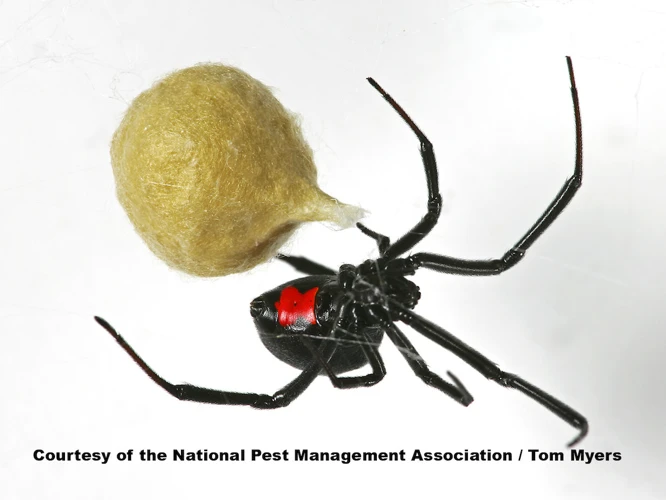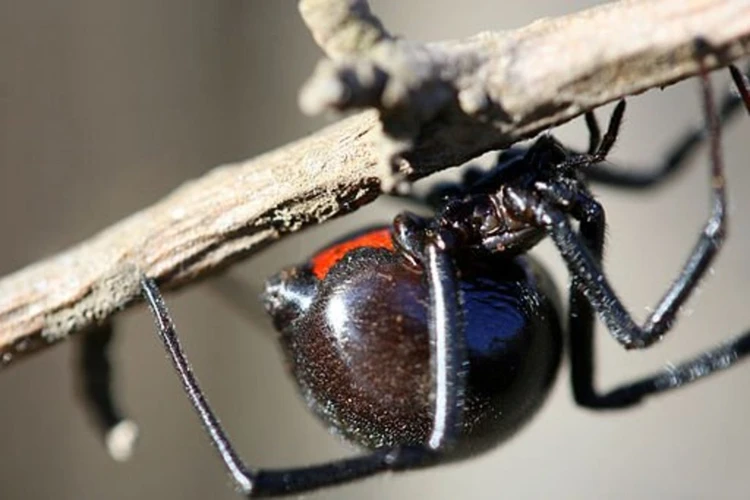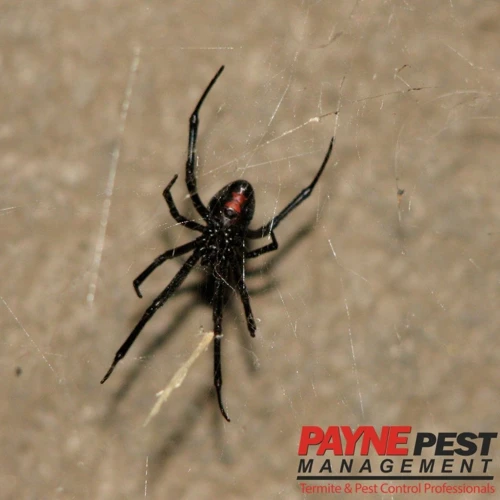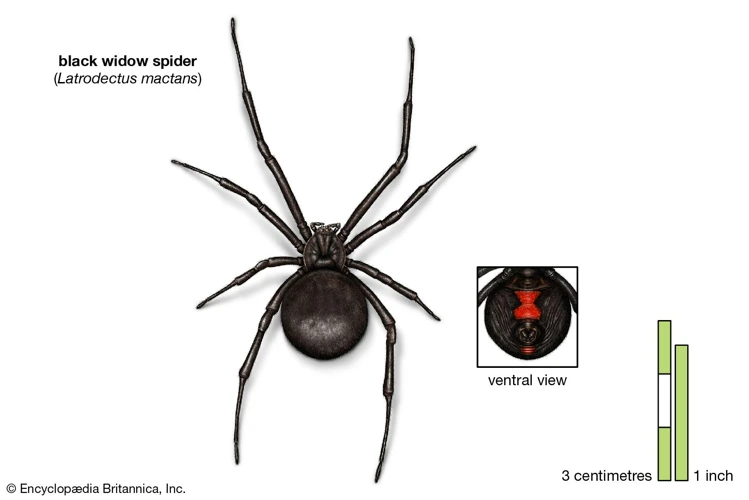As you delve into the mysterious world of arachnids, there’s perhaps no better known–or feared–creature than the female black widow spider. This eight-legged predator with its signature red hourglass has captured the imaginations of people for generations. But how much do we really know about the maturation process of these fascinating creatures? In this article, we will explore the different stages of the maturation process of the female black widow spider, from egg to adult. Get ready to be spellbound as we take a deep dive into the enigmatic world of the black widow spider.
The Egg Stage

During the egg stage, the maturation process of female black widow spiders begins. This is a crucial stage in a spider’s life as it sets the foundation for all future development. Female black widow spiders invest a significant amount of effort into reproduction which makes the process of egg production crucial for the next generation of spiders. At this stage, female spiders must be able to effectively construct and protect their egg sacs. The successful development of eggs is vital since it will determine the number of spiderlings that emerge. In this section, we will discuss the egg production process and the construction of egg sacs. To learn more about how black widow spiders build webs, please check out our article on Web-Building Behavior and Maturation of Black Widow Spiders.
Egg Production
During the egg production stage, female black widow spiders will produce hundreds of eggs that are housed within a silken egg sac. These sacs can vary in appearance and texture depending on the species of black widow spider, but they are generally round and covered in a rough, bumpy texture. The silk used to construct these sacs is produced in the spider’s spinnerets.
Egg production in black widow spiders is heavily influenced by environmental factors such as temperature and prey availability. A study conducted on Latrodectus mactans, a common species of black widow found in the southern United States, found that egg production was highest when prey was abundant and temperatures were around 30°C (86°F).
Female black widow spiders are also able to store sperm from a single mating for several months, allowing them to fertilize multiple egg sacs without the need for repeated mating. This reproductive strategy allows for greater control over the timing of egg production, which can be beneficial in environments with fluctuating prey availability or other environmental stresses.
Interestingly, some female black widow spiders are known to cannibalize their mates after mating, although the reasons for this behavior are not well understood. It is thought that cannibalism may provide the female with additional energy resources or may serve to eliminate potential competitors for resources.
| Factors affecting egg production in black widow spiders | Examples |
|---|---|
| Temperature | A study found that egg production was highest around 30°C (86°F) |
| Prey availability | Egg production is highest when prey is abundant |
| Mating status | Females can store sperm from a single mating for several months, allowing for controlled egg production |
Understanding the factors that influence egg production in black widow spiders can be useful in managing populations, particularly in areas where they may pose a risk to humans or other animals. For example, knowledge of the species’ mating and egg production habits can aid in the development of more effective pest control strategies. To learn more about the maturation process of female black widow spiders, please refer to molting stages and maturation process.
Egg Sac Construction
During the egg sac construction phase, the female black widow spider carefully spins a silken sac to protect her eggs. This sac can range in size from a quarter inch to over an inch in diameter, depending on the species. The construction of the sac takes several hours to complete, and the female spider will usually suspend it in a web for protection.
The material used to create the sac is unique to black widow spiders, as it contains multiple layers of silk with varying textures and strengths. This allows for optimal flexibility and strength, ensuring that the eggs remain protected from predators and the elements.
Once the egg sac is complete, the female will deposit up to 900 eggs inside, although this number is typically much lower. The female spider will then guard the sac fiercely, protecting the eggs from any potential threats.
It’s important to note that the maturation process of female black widow spiders can be impacted by various factors, including prey availability, population density, and inter-species competition. Managing these factors can help to increase the maturation rate of the spiders, thereby reducing the risk of black widow spider bites.
Prey availability plays a significant role in the maturation process of female black widow spiders, as a lack of prey can result in reduced growth rates and delayed maturation. This is because female black widow spiders require a high-protein diet to support their rapid growth. Without an adequate source of food, the spiders may not reach sexual maturity as quickly, which can impact the entire population.
To learn about the risks associated with black widow spider maturation, check out our article on black widow spider maturation risk. Additionally, our article on prey availability and maturation rate of black widow spiders provides further insight into how environmental factors impact black widow spider growth and development.
The Larval Stage

During the maturation process of female black widow spiders, the larval stage is a crucial phase in their development. It is during this stage that the spiders undergo significant changes and growth, preparing them for adulthood. The larval stage is marked by a series of distinct developmental stages that include hatching, emergence, early development, and growth. As the spiders progress through these stages, they become larger, more mature, and better equipped to survive in their environment. In the following sections, we will explore the various aspects of the larval stage in more detail, including the hatching and emergence process, early development, and growth and molting. By examining each of these stages in detail, we can gain a better understanding of how female black widow spiders mature and develop over time.
Hatching and Emergence
During the larval stage, the eggs will hatch, and the baby spiderlings will emerge. These spiderlings are extremely vulnerable to predation and environmental conditions such as temperature and humidity. Only a small percentage of spiderlings will survive to adulthood. The newly hatched spiderlings are less than 1 millimeter long and will immediately disperse from the egg sac. They will spin out a strand of silk to catch the wind and disperse to new habitats.
| Attribute | Description |
|---|---|
| Size | Spiderlings are less than 1 millimeter in length. |
| Dispersal | Spiderlings disperse immediately after hatching, using a strand of silk to catch the wind and move to new habitats. |
| Vulnerability | Spiderlings are highly vulnerable to predation and environmental conditions, and only a small percentage will survive to adulthood. |
Once the spiderlings have dispersed, they will begin to feed on small insects and other arthropods. They will grow rapidly and will molt several times during this stage. Each molt will allow the spiderling to grow in size and develop new features. This stage can last for several months, depending on environmental conditions and food availability. As they grow, the spiderlings will eventually develop distinctive markings that are characteristic of black widow spiders.
During this stage, it is important to note that male and female black widow spiders look very similar until they reach sexual maturity. Sexual maturity occurs at different rates for males and females, and the timing can be influenced by a number of factors including population density, temperature, and food availability.
Early Development
During the early development stage in the maturation process of female black widow spiders, the spiderlings emerge from the egg sac after hatching. At this stage, the spiderlings are extremely small and fragile, measuring about 0.13 cm in length.
These spiderlings are also called neonates and during the early days of their life, they rely on the nutrients and energy they receive from the egg sac. They are not capable of web spinning at this stage and hence cannot capture prey like their adult counterparts.
However, these spiderlings do possess venom that is equally potent as the adult black widow spiders. The venom of the black widow spider contains a neurotoxin that can cause muscle pain, spasms, and in some cases, even death.
During this stage, the spiderlings tend to stick together in a cluster and display a social behavior where they communicate through chemical signals. This stage is crucial for the development of the spiderlings and they need to have access to sufficient moisture and warmth to thrive.
Interestingly, the maturation rate of black widow spiders is greatly influenced by their population density. In dense populations, the juvenile spiders tend to mature at a slower rate than those in low-density populations. This is because when food resources are scarce, they need more time to grow and mature.
The early development stage is an important stage in the maturation process of female black widow spiders and plays a pivotal role in determining their growth and development. As the spiderlings grow, they enter the next stage of the maturation process, the juvenile stage, where they begin to exhibit more complex behaviors and skills such as web spinning and feeding.
Growth and Molting
During the growth and molting stage, the juvenile female black widow spider undergoes significant physical changes. They grow rapidly in size, shedding their exoskeleton multiple times before maturing into an adult. The process of molting involves the spider creating a new exoskeleton under the old one and then breaking free from the old exoskeleton through a process called ecdysis.
Each molt leads to an increase in size and a development of new physical features. The spider’s legs, cephalothorax, and abdomen become longer and more defined with each molt. The spider also develops the reddish-orange hourglass marking on its abdomen that is characteristic of the female black widow spider.
Table:
| Molting Stage | Physical Changes |
|---|---|
| Molt 1 | Initial growth in size, development of legs |
| Molt 2 | Further growth in size, development of cephalothorax and abdomen |
| Molt 3 | Final growth in size, development of hourglass marking |
It’s important to note that the rate of growth and maturation can be affected by various factors, such as population density and temperature. Research has shown that higher population densities can result in slower growth rates and delayed maturation, while warmer temperatures can accelerate growth and maturation.
Understanding the growth and molting process is crucial in the management of black widow spider populations. By studying the maturation rate and growth patterns, experts can develop more effective control strategies and prevention methods to reduce the risk of black widow spider bites.
Internal Link: To learn more about the maturation process of female black widow spiders, check out our article on maturation process of black widow spider management.
The Juvenile Stage

As female black widow spiders progress through their life cycle, they enter the Juvenile stage where they undergo significant changes. During this period, their growth rate accelerates, and they consume even larger prey to fuel their development. Interestingly, the maturation rate of black widow spiders is influenced by various factors, such as population density and habitat quality. In this article, we’ll delve deeper into the Juvenile stage and explore how it contributes to the maturation process of female black widow spiders. We’ll also take a closer look at a few factors that affect their growth rate, including their population density and habitat quality.
Feeding and Growth
Once the black widow spider reaches the juvenile stage, they require consistent feeding to promote healthy growth and development. A young black widow spider will feed on small insects such as fruit flies and pinhead crickets. As they continue to grow, they will move on to larger prey such as grasshoppers, beetles, and even other spiders.
One interesting fact about the feeding habits of black widow spiders is that they are opportunistic predators. This means that they do not actively hunt for their prey, but instead wait for them to come within striking distance. They spin webs in places such as cracks in walls, corners of ceilings, or under rocks where prey are likely to be found. Once a prey item, such as a fly or grasshopper, becomes entangled in the web, the spider will immobilize it with venom and begin to feed.
Feeding plays a critical role in the growth and maturation rate of black widow spiders. A study on the maturation rate of black widow spiders found that those who were consistently fed grew much faster and reached maturity sooner than those who were not fed as frequently. This highlights the importance of proper nutrition in the development of these spiders.
Population density can also affect the feeding habits and growth of black widow spiders. A study on population density and black widow spiders found that those living in higher density populations had smaller body sizes and slower maturation rates compared to those in lower density populations.
It is important to note that while black widow spiders do have the potential to be dangerous to humans, they typically only bite in self-defense if they feel threatened. To avoid being bitten, it is best to avoid contact with these spiders and to maintain a clean living environment to prevent their population from thriving.
Proper feeding plays a crucial role in the growth and maturation of black widow spiders. They are opportunistic predators that rely on their webs to catch prey, and consistent feeding promotes healthy development. Population density can also impact their growth and development. Understanding these factors can help to better understand how to coexist with these fascinating and important creatures.
Molting and Maturation
During the juvenile stage, female black widow spiders undergo multiple molts and maturation processes that are crucial for their survival. Molting, which refers to the shedding of old exoskeletons and the growth of new ones, is necessary for spider growth and repair. In between molts, the spider may retain its old exoskeleton, but eventually, it will grow too large to fit inside it. At that point, the spider releases a hormone that triggers the formation of a new exoskeleton underneath the old one. Once the new exoskeleton is fully formed, the spider will wiggle out of the old one, leaving a perfect replica of its former self, but one that is soft and vulnerable. It then takes a few hours for the new exoskeleton to harden and fully mature.
Maturation, on the other hand, is a more complex process that involves the development of secondary sexual characteristics in the female spider necessary to become reproductively active. This process typically occurs after the fifth or sixth molt, but the timing can vary depending on environmental factors such as temperature and humidity. During this stage, the female spider’s exoskeleton may become darker, and her body shape may change as well.
To better understand the intricacies of molting and maturation in the female black widow spider, researchers have conducted inter-species comparisons with other spider species. These studies have revealed important insights into the hormonal and genetic mechanisms that regulate molting, growth, and maturation in spiders.
The Adult Stage
As the female black widow spider reaches adulthood, one might expect her to be a fierce predator and an intimidating force to be reckoned with. Yet, this stage of the maturation process is in fact a complex and vulnerable period in her life cycle, requiring careful attention and preparation. The mature female black widow must navigate the challenges of reproduction, fending off potential predators, and establishing her territory in a competitive environment. Let’s take a closer look at the intricacies of the adult stage in the maturation process of the female black widow spider.
Mating and Reproduction
During the adult stage, female black widow spiders are ready to mate and reproduce. Female black widows can mate multiple times, and each mating results in a new egg sac. Mating typically occurs during the spring and summer months, and male black widow spiders are attracted to females through their pheromones.
When they locate a female, male black widows perform a courtship ritual that involves tapping on their webs to alert the females of their presence. If the female is receptive to mating, she will allow the male to approach her and mate. In some cases, however, the female may attack and consume the male, a behavior known as sexual cannibalism.
After mating, female black widows construct a new silken egg sac, where they deposit hundreds of fertilized eggs. Female black widows can produce multiple egg sacs over their lifetime and can lay up to 900 eggs in a single season.
Once the eggs are laid, the female black widow will guard them fiercely, and if disturbed, she may become aggressive and attack. It takes about 20-30 days for the eggs to hatch into spiderlings.
The mating and reproduction process of female black widow spiders is a vital aspect of their lifecycle, ensuring the survival of future generations of black widow spiders.
Behavior and Predation
Behavior and Predation are important aspects of the adult stage of female black widow spiders. Black widows are well known for their venomous bites and the risks they pose to humans and other animals. They are also known for their cannibalistic tendencies, with females sometimes consuming their mates after mating.
When it comes to behavior, female black widows are generally solitary creatures, preferring to spend most of their time alone in their webs. They are nocturnal hunters, using their webs to trap and immobilize prey before delivering a venomous bite. This venom is particularly potent, containing neurotoxins that can cause muscle pain, spasms, and even paralysis. It is important to note that black widows are not typically aggressive towards humans, but they will bite if they feel threatened or provoked.
In terms of predation, black widows are sometimes preyed upon by other animals, including birds, lizards, and other spider species. However, their venomous bites and resilient nature make them difficult targets for many predators. They also have the ability to regenerate lost legs, allowing them to recover from some types of injuries.
The table below summarizes key information about the behavior and predation of female black widow spiders:
| Aspect | Information |
|---|---|
| Behavior | – Solitary creatures, preferring to spend most of their time alone in their webs – Nocturnal hunters, using their webs to trap and immobilize prey before delivering a venomous bite – Typically not aggressive towards humans, but will bite if they feel threatened or provoked |
| Predation | – Preyed upon by other animals, including birds, lizards, and other spider species – Venomous bites and resilient nature make them difficult targets for many predators – Ability to regenerate lost legs allows them to recover from some types of injuries |
The behavior and predation of female black widow spiders play important roles in their survival and reproductive success. While they can be dangerous to humans if provoked, they also serve as important members of their ecosystems, contributing to the control of insect populations and serving as prey for other animals.
Conclusion
After exploring the maturation process of female Black Widow spiders step-by-step, it’s clear that this process is a complex series of stages. From the egg stage to the adult stage, each stage involves unique biological functions that are essential to the spider’s growth, development, and survival.
During the egg stage, females produce eggs and construct egg sacs for protection. In the larval stage, spiders hatch from their eggs and go through early development, growth, and molting. In the juvenile stage, they continue to feed and molt while maturing into adults. Finally, in the adult stage, females mate and reproduce, engage in complex behaviors, and face potential predation.
It’s fascinating to observe how female Black Widow spiders go through these stages in order to live full and productive lives. Despite their reputation as dangerous predators, Black Widows play an important role in their ecosystems. By preying on insects and other small animals, they help to maintain a balanced food web and contribute to the health of their habitats.
Overall, the maturation process of female Black Widow spiders is a remarkable example of the intricate workings of the natural world. By understanding this process, we can gain a deeper appreciation for the diversity of life on Earth and the importance of protecting our planet’s biodiversity.
Frequently Asked Questions
What do female black widow spiders feed on?
Female black widow spiders primarily feed on insects, such as beetles, mosquitoes, and grasshoppers.
How long does it take for black widow spider eggs to hatch?
Black widow spider eggs typically take approximately 20-30 days to hatch after being laid.
What is the purpose of the egg sac constructed by female black widow spiders?
Egg sacs are constructed to protect the eggs throughout their development, and to provide a safe environment for the spiderlings once they hatch.
How often do black widow spiders molt during the juvenile stage?
Black widow spiders typically molt six times during the juvenile stage, shedding their exoskeleton as they grow larger.
How long does it take for a black widow spider to reach adulthood?
It takes approximately 3-4 months for a black widow spider to reach adulthood, from the time they hatch as spiderlings.
How do black widow spiders mate?
During mating, the male spider extends his palps to transfer sperm to the female spider.
What is the typical lifespan of a female black widow spider?
The lifespan of a female black widow spider can vary, typically ranging from 1-3 years.
Do black widow spiders have predators?
Yes, black widow spiders have natural predators such as birds, lizards, and other spider species.
What is the behavior of female black widow spiders towards their young?
Female black widow spiders are protective of their young spiderlings, often guarding the egg sac and providing food for them after hatching.
Are black widow spider bites lethal to humans?
While black widow spider bites can cause severe symptoms such as muscle pain and spasms, they are rarely lethal to humans if treated promptly.







